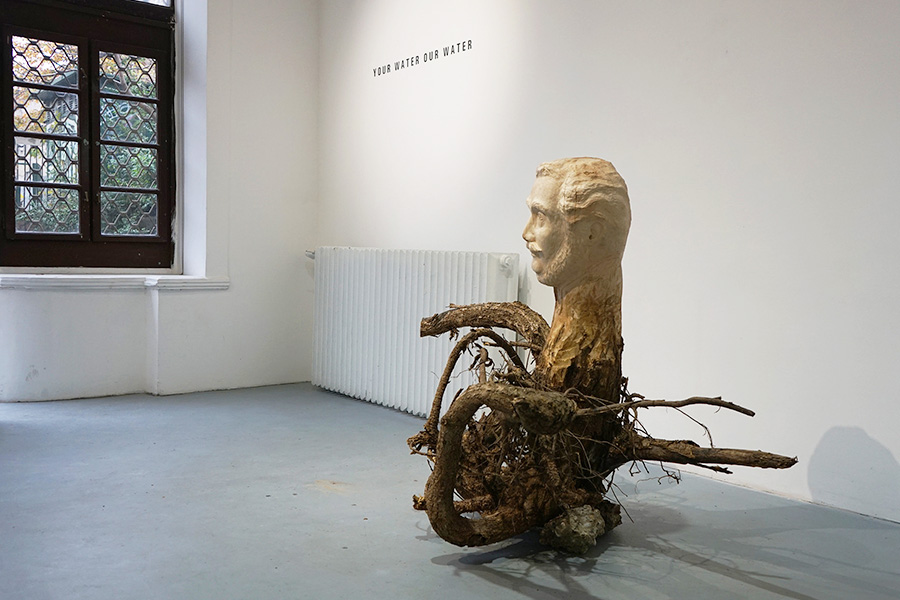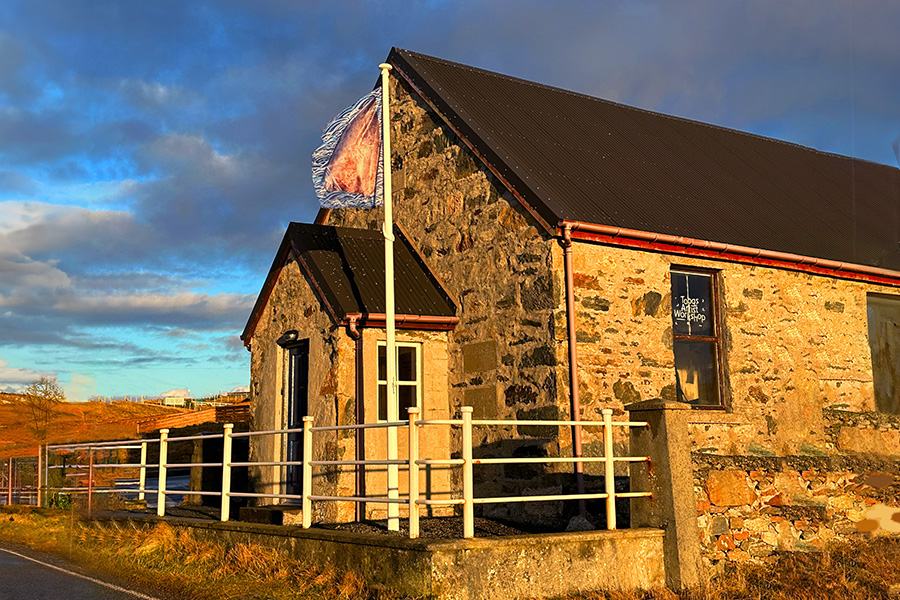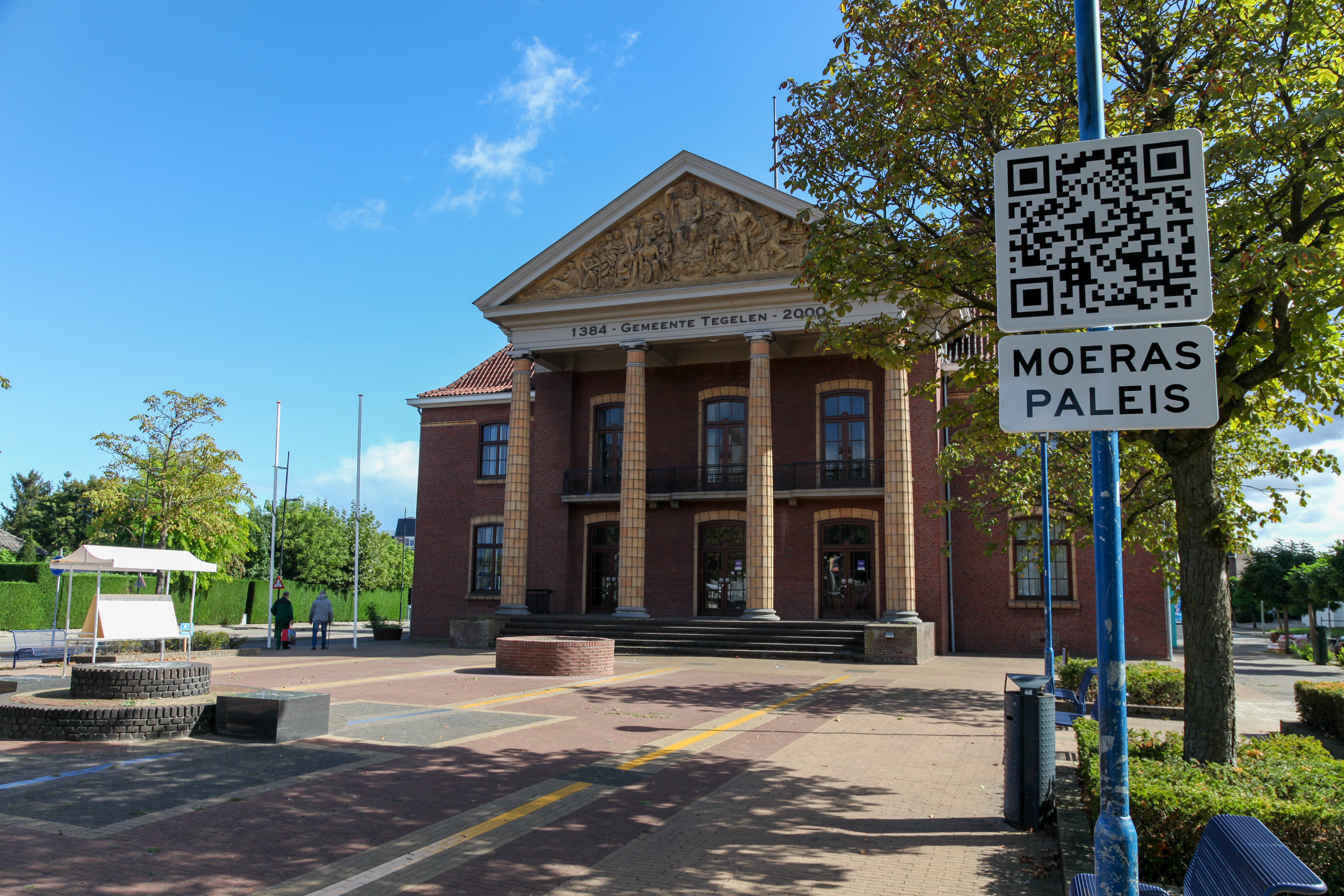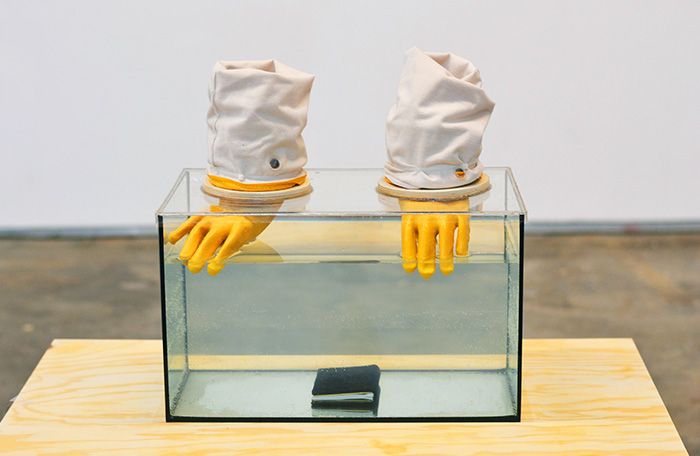Miriam Sentler

Mining Myths in solo-exhibition at Museum het Nieuwe Domein, Sittard (NL), 2024. Photo: Jonathan Widdershoven.
Mining Myths
This work was developed during residencies and research periods in the lignite (brown coal) mines of Garzweiler, DE and on the premises of a former coal mine in Genk, BE. In collaboration with Jester and the Emile van Dorenmuseum in Genk, BE.
Thanks to Lotte van Dijk, Alexander Klose, Dewi Baggerman, Alicja Melzacka, Maaike Orlando Gouwenberg and Kristof Reulens.
Collection: Museum het Nieuwe Domein, Sittard, NL
 .
. 
 . The project is generously funded by BRUTUS,
. The project is generously funded by BRUTUS, Mondrian Fund, Stichting Stokroos and
Hanzenfonds (Prince Bernhard Culture Fund).
(2023) Tapestry, 350 x 175 cm. Jacquard weave, merino wool and cotton. Produced in collaboration with the TextileLab, the professional workplace of the Textielmuseum Tilburg.
Mining Myths interweaves coal and myth in the mined underworld of Limburg, a geographical area stretching over the boarders of Germany, Belgium and the Netherlands. The research for this second tapestry took place during a residency with Jester (formerly CIAP/FLACC) and the Emile van Dorenmuseum in Genk, one of the largest former mining towns of Belgium. This region also represents the birth place of Miriam and her ancestors who were themselves miners.
The tapestry displays how mythology is being used in the present day to rebrand the former mining buildings and towns, as well as how it has been reshaped and distributed in the past by the state mines, making the descent into the depths morally just. Exemplary, the locations of purgatory and hell were “relocated” deeper within earth’s layers, relieving fear about a possible encounter with the devil. In the present day, a viewing platform over the Hambacher mine is inspired by the Colossus of Rhodes and a former mining building in Genk has been named after Thor, god of thunder and lightning.
The research for the project is based on the books “the Luck of Limburg” by Marcia Luyten (2015) and “Troye of the Carbon” by Dutch fairytale-author Bertus Aafjes (1961). Some details tell about the “resurrection” of mineworkers in collapsed mine shafts in order to avoid the pay of worker compensations in the case of death underground. Another part of the tapestry tells about the Sisyphus-work of the mineworkers’ wives who had to clean their husbands’ cloth bundles 6 days a week. In the center-right we see the slaying of the “coal dragon”, giving heroic pride to the workers battling darkness and explosions on a daily basis. In the middle of the tapestry we see the mineworkers’ patroness Barbara, with a mineshaft - instead of the trademark tower - in her lap.

Mining Myths at -162°C, 450 kg/m³ | Fossil Energy, Fragile Futures, 09.03. to 26.05.2024, Kunsthalle Wilhelmshaven, exhibition view. Photo: Edward Greiner

Details Mining Myths tapestry. Photo: Jonathan Widdershoven/ Het Nieuwe Domein, 2024.
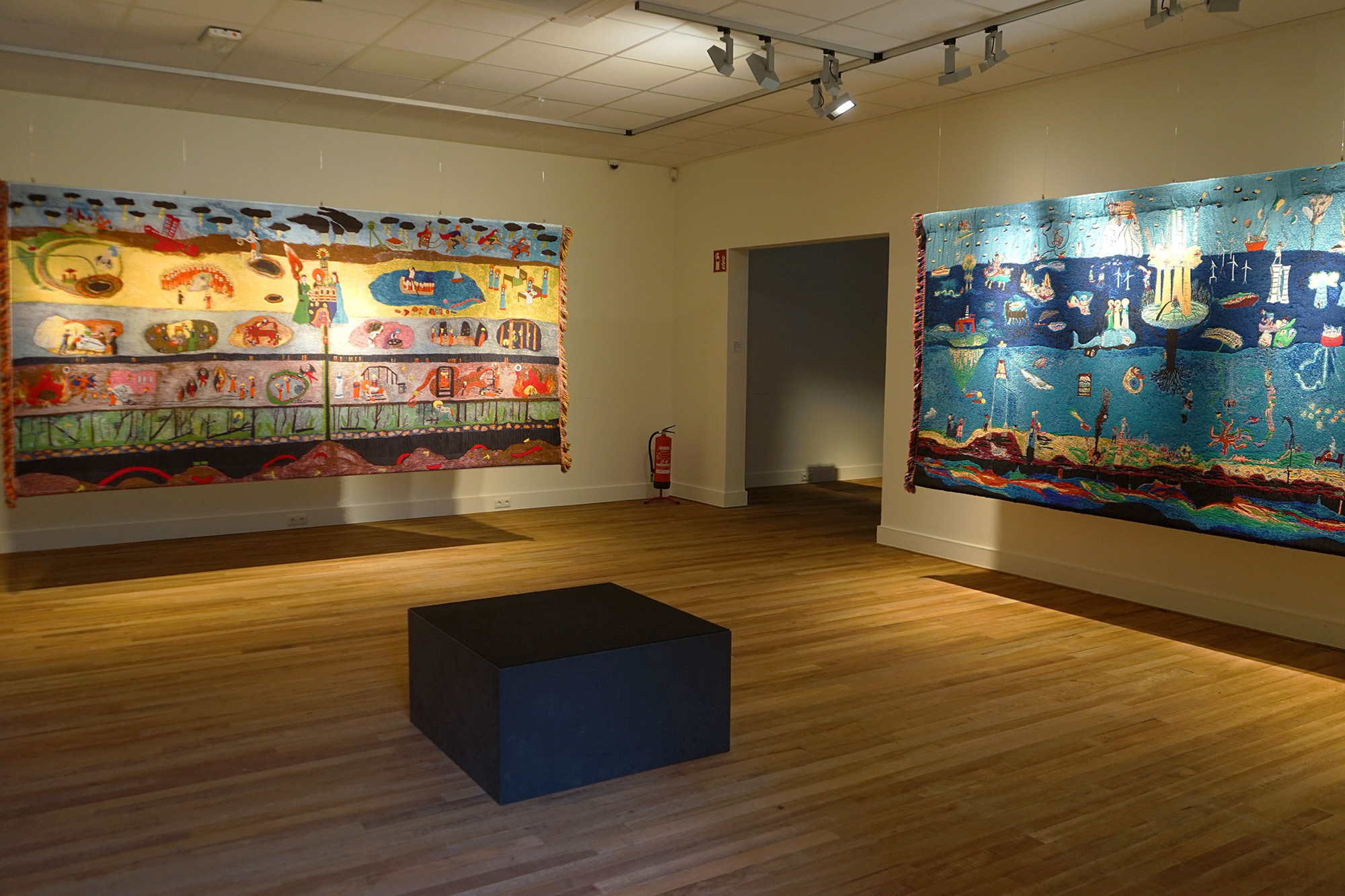
Mining Myths Solo Exhibition, Museum het Nieuwe Domein, 2024. Photo: Miriam Sentler.
 -162°C, 450 kg/m³ | Fossil Energy, Fragile Futures, 09.03. to 26.05.2024, Kunsthalle Wilhelmshaven, exhibition view, Photo: Edward Greiner.
-162°C, 450 kg/m³ | Fossil Energy, Fragile Futures, 09.03. to 26.05.2024, Kunsthalle Wilhelmshaven, exhibition view, Photo: Edward Greiner.
-162°C, 450 kg/m³ | Fossil Energy, Fragile Futures, 09.03. to 26.05.2024, Kunsthalle Wilhelmshaven, exhibition view, Photo: Edward Greiner.
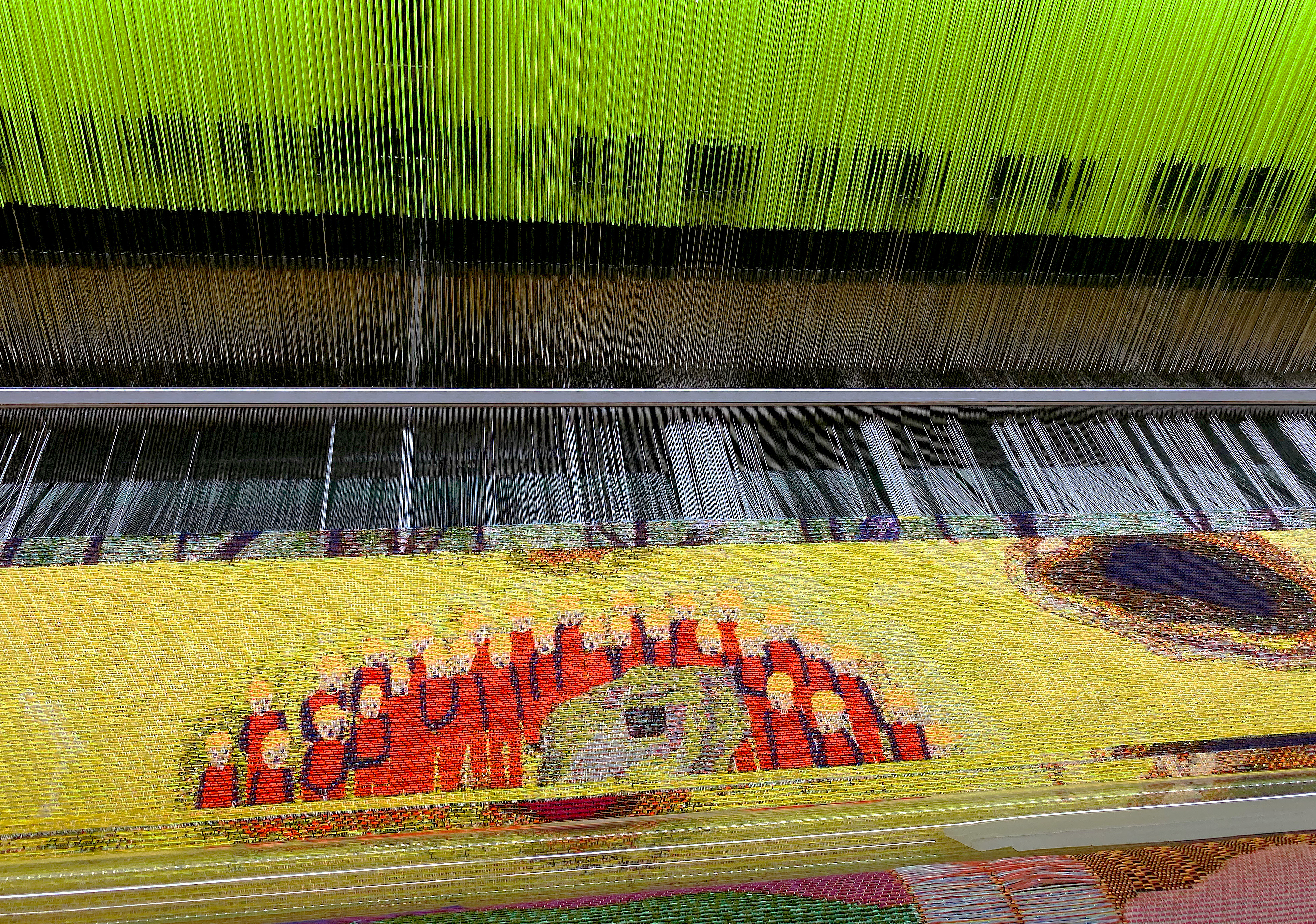
Weaving process Mining Myths in the Textiellab, the professional workplace of the Textielmuseum, july 2023, Tilburg, NL.

Drawing Mining Myths, pastel pencils, paper. 350 x 175 cm, photo credits: Miriam Sentler, 2023.

